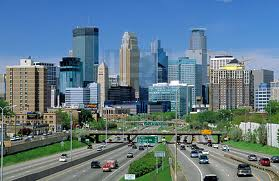

20 inhabitants were jointly the most frequently-adopted threshold. In the chart below we have mapped the minimum population threshold for countries who adopt this within their definition of ‘urban’. And since the reported global figure is simply the sum of nationally-reported shares, the lack of a universal definition is also problematic for these aggregated figures.Įven if we could define a single metric to use - such as a minimum population threshold in a settlement - countries adopt very different threshold levels. The table illustrates the broad range of definitions between countries which compromises cross-country comparisons.
Urban definition full#
The UN World Urbanization Prospects database also provides the full downloadable list of statistical definitions for each country. In the table below we highlight the varied definitions across a selection of countries. Some countries use minimum population thresholds, others use population density, infrastructure development, employment type, or simply the population of pre-defined cities. Not only do the thresholds of urban versus rural vary, but the types of metrics used also differ. The problem, however, is that countries adopt very different definitions of urbanization. The UN reports figures based on nationally-defined urban shares. There is currently no universal definition of what ‘urban’ means. ‘What defines an urban area?’ lies at the centre of these debates. However, they’re not without their critics: some researchers suggest that far more people live in urban areas than these figures suggest. The UN figures are the most widely referenced and cited on global urbanization. Using UN Urbanization Prospects projections, in 2018 this is estimated to be just over 55 percent of the world. UN estimates therefore report that 54 percent of people in the world lived in urban areas in 2016.

In 2016, urban populations increased to 4 billion while the world’s rural population had increased only marginally to 3.4 billion. In 2007, urban and rural populations were almost exactly equal at 3.33 billion each. Here we see that in 1960 twice as many people lived in rural settings (2 billion) than in urban areas (1 billion). 6 This is based on nationally-collated census figures, combined with UN estimates where census data is unavailable. In the chart below we see the total number of people defined as living in urban and rural areas, extending from 1960 to 2016. Figures reported from the United Nations (UN) deliver a straightforward answer. Let’s therefore look at the conflicting estimates of how urban our world is, and where these differences come from.Īt first glance this seems like a simple question to answer. If our aim is to develop resource-efficient, inclusive cities, understanding how many people they must provide for is essential for urban planning. The UN’s 11th Sustainable Development Goal (SDG) is to “ make cities inclusive, safe, resilient and sustainable“. Understanding the distribution of people in a given country is essential to make sure the appropriate resources and services are available where they’re needed. The allocation and distribution of resources - ranging from housing and transport access to healthcare, education, and employment opportunities - should all be dependent on where people live. Whilst disagreement on the numbers can seem irrelevant, understanding cities, urbanization rates, the distribution and density of people matters.

disagreements in urban population numbers arise from definition or boundary differences in what makes a population ‘urban’.urbanization is expected to continue to increase with rising incomes and shifts away from employment in agriculture 4.rates of urbanization have been increasing rapidly across all regions (in 1800, less than 10 percent of people across all regions lived in urban areas).although it can seem like our expanding cities take up a lot of land, only around 1% of global land is defined as built-up area 3.the broad distribution and density of where people live across the world (sometimes at very high resolution).globally more people live in urbanized settings than not (disputes in these figures are all above the 50 percent urban mark).Before looking in more detail at the differences in estimates of urban populations, we should first clarify what we do know:


 0 kommentar(er)
0 kommentar(er)
